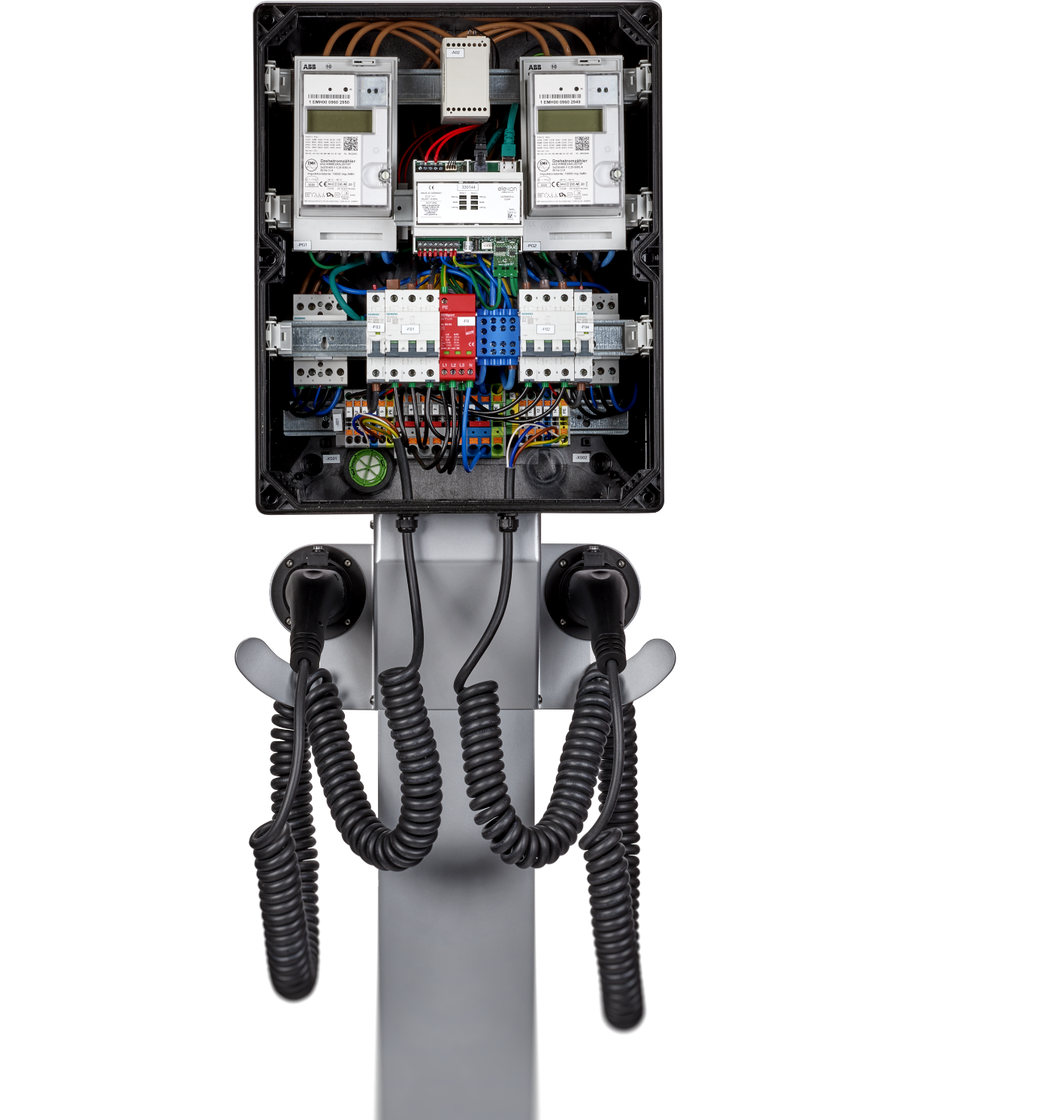Load management -
plan your charging
cycles smartly and
(cost-)efficiently!
Optimize your fleet charging times
Larger e-vehicle fleets in particular can strain the charging capacity
at charging parks and, in some circumstances, result in high costs.
Our smart load management system helps you avoid peak loads –
and does so fully automatically.
Coneva
Load and charge management with coneva, our strong partner
With coneva, we have an experienced and competent partner for software solutions at our side that complements our products with smart load and charging management options. You are at the center of everything we do: together we will implement what you truly need!
Discover the benefits of working with elexon and coneva:
- Are you growing? We’ll grow with you. Our products and software can be expanded at any time.
- Save costs – by reducing your power output by up to 70%!
- Spare your fleet management extra work – our system takes care of networking the charging stations, storage system and building connection fully automatically!
- Reduce your employees’ workload. They only have to park and connect their vehicles. Our load management system does the rest on its own.
One load management system -
three modular solutions
With static load management, you assign a fixed power output to each charging park. This is distributed to the individual charging points, which are triggered according to their usage, controllability and priority switching. With this solution, you can start cutting costs and achieve a high level of user comfort.
In dynamic load management, the charging power allocated to the charging park is dynamic. In this case, the available power is dynamically distributed to the charging columns, taking into account the building load and the grid connection point. If the building’s grid connection reaches its maximum capacity, dynamic load management automatically reduces the cars’ charging power. As soon as more energy is available again at the connection point, e.g. when the building load drops overnight, it is distributed in the charging park. The house utility connection can be your office complex – or even an apartment building or housing complex.
The advantage: available power is utilized optimally, so that expensive network expansion is not necessarily required.
You can go a step further with schedule-based load management where you define factors based on your very specific fleet needs. For example, you can include current energy prices in your load management. Or you can use energy from a PV system – in which case you should rely on a “solar schedule”.

Case
Case Study: How dynamic charge management pays off
Imagine you have 50 e-transport vehicles. You have built a charging park with 50 charging points for them. The vehicles return during the afternoon with an average of 20% power remaining and must be fully charged the next morning. If you go without charging management, all vehicles would connect to the grid at the same time, causing a load peak of about 350 KW. With the help of our smart load management system and the dynamic variant to charge the vehicles, the charging cycles are triggered one after the other. The peak load thus remains below 100 KW – which means annual electricity savings of approximately €5,000.
Plus, you save yourself a lot of trouble if your household connection can’t deliver power peaks of 350 KW! So you see: charging and load management pays off twice over. Contact us to learn more about how you can charge your fleet efficiently.
Request consultation
Interested? Let’s talk!
Together we’ll find the best combination of charging infrastructure and load management for you.